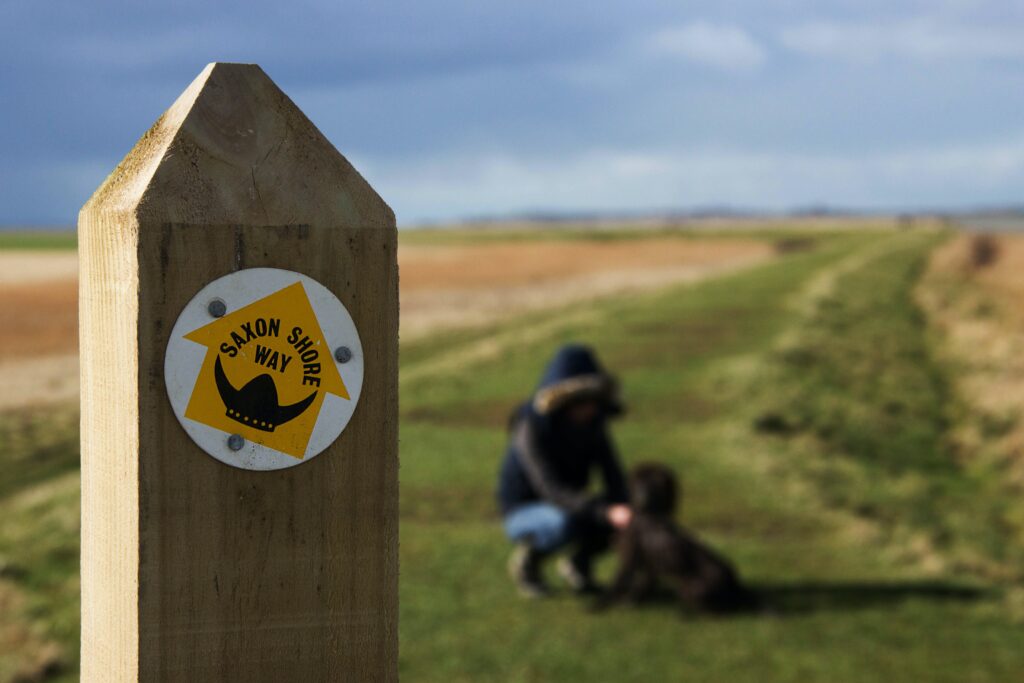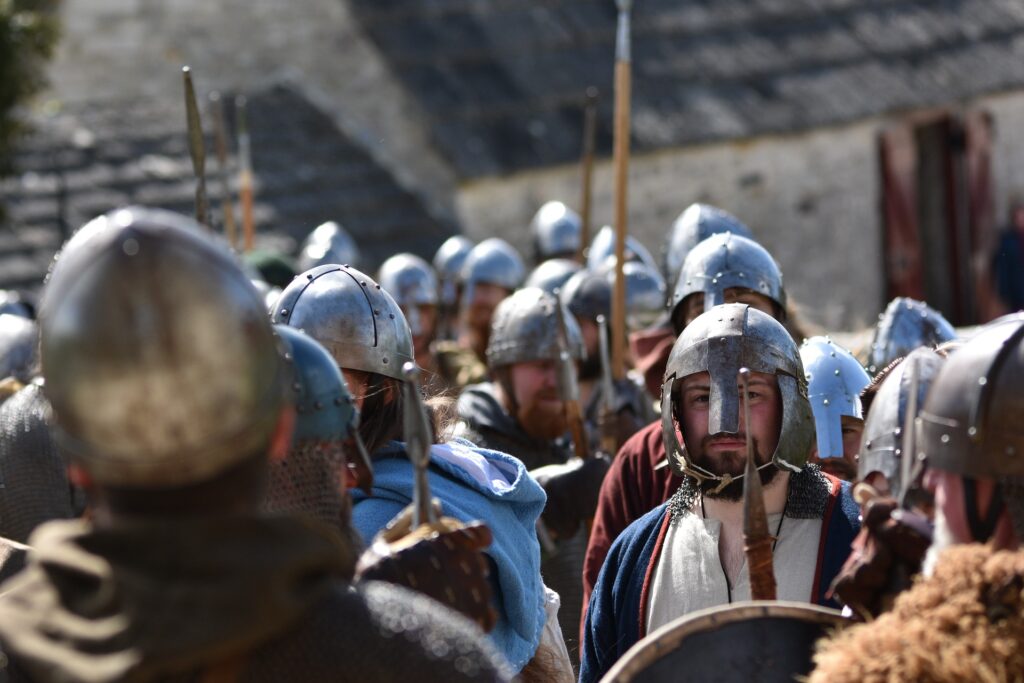We have all heard of Alfred the Great, King of Wessex and in most contemporary kings lists he sits as the first official King of England (or most of it). The Saxon king line extends much further back and in this series, I will detail everything we know about the Saxon kings starting with Cerdic of Wessex.
Understanding Saxon history is an important part of our modern cultural identity and alongside many other invaders to our shores, the Saxons helped build the Britain we know today.
Who was Cerdic of Wessex? Where did he rule and did he even exist? Discover all that and more in the most detailed biography you will find about him online.
Separating Fact from Myth
Before we start, some of this article has relied on trying to discern facts from myths, in particular the Anglo-Saxon Chronicle which was written more than a century after Cerdic lived. There is a level of interpretation needed to decide what was likely to have occurred, and what wasn’t.
I have done my best to outline a rational explanation wherever I have had to decide how credible a source is.
King Cerdic of Wessex – An Introduction to Sub-Roman Britain
In 407 AD, Constantine III recalled troops in Britain to Gaul to deal with Germanic armies who had invaded from the east. This left the islands of Britain undefended with only small pockets of settled Roman contingencies in forts dotted about the country.
At this time, many tribal peoples were beginning to invade and occupy territories for several reasons.
- Rival tribes,
- Better opportunities (wealth/agriculture),
- Stability.
Britain itself was populated by a Celtic population known as Bretons, and also as mentioned, the few remaining Romans.
The Saxons can best be described as being similar to Vikings in so much as they would raid into foreign land and settle if they found they could. Saxons probably originated from the north coast of Germany (at the time) and were Germanic peoples.
Domestic Competition for Saxons was High
Although the Saxons seized land in England by force, in truth they were not a particularly powerful people. At home they had a lot of competition from various other factions including:
- Angles,
- Jutes,
- Frisians,
- Franks,
- Other Germanic tribes.
And let’s not forget, a heavier Roman presence in Gaul and across much of northern Europe at the time.
In comparison to the other tribes, the Saxons had a weak stranglehold over their land and it should be considered an invasion of necessity as much as conquest. In fact, outside of their newly found English settlements, the Saxons would find the next few centuries to be unkind and they suffered many defeats and hardships at home.
Settling in England
England by contrast to mainland Europe was relatively peaceful with a lot of well organised existing Roman infrastructure. This infrastructure included farmsteads, forts, roads, aqueducts and the like. Quite different to the muddy encampments of their homeland.
The Saxons found little resistance to their ‘invasion’ of England and settled quickly in what’s now known as the South East (London, Essex, Surrey and Sussex).
The exact date of their migration to England is uncertain. We know it was between 407 when the Romans left and 441 when the Romans recorded Britain was under Saxon rule (Chronica Gallica of 452).
Nature of the Migration
To clear up confusion, this wasn’t a unified invasion of England. It is likely various Saxon tribes undertook the journey at different points and they maintained their tribes when they settled.
There were four distinct Saxon kingdoms:
- East Saxons – Modern day Essex,
- The Middle Saxons – Modern day North London (previously Middlesex),
- South Saxons – Modern day Sussex (east),
- West Saxons – Modern day Sussex (west).
The migration is hotly debated by historians who claim it was either a violent invasion or a peaceful migration. The truth is probably a combination of the two. Saxons probably took land mostly unobstructed and when there was need for violence used it.
Establishing Territory – Early Saxons
Initially the Saxons probably operated in the same way as Vikings would some centuries later when they invaded England. They maintained tribal allegiances and were probably governed on a settlement level by leaders similar to Viking Jarls.
As Saxon settlements, trade and commerce grew it is likely the Saxons nominated leaders of each area. We aren’t exactly sure how the very earliest Saxon settlements and regions were governed; we can only make educated guesses.
We can assume the Saxons assimilated well with their new homeland, adopting Breton culture and traditions, even adopting Celtic names.
Which Brings us on to King Cerdic of Wessex
Around 80 years after the Saxons had first settled in England, they had nominated their first King, although it is likely he was seen as a chieftain.
The necessity for a king was likely to resolve disputes internally and externally. Saxon tribes for the most part lived harmoniously with each other but when disputes did arise there needed to be a hierarchy to sort them out.
Likewise, a chieftain or king could effectively organise defence or offence if the need arose. One tribe might not be able to repel an attack, whereas a unified kingdom of tribes could organise men and protect their land.
Let’s discover more about Cerdic.

Where Was King Cerdic of Wessex born?
We don’t know definitively where Cerdic was born, but the likelihood he was born in England is extremely high. He had a Breton (not Germanic) name, and he was too young to have been part of the original settlement parties.
It’s thought he wasn’t actually born a Saxon and may have been a Roman-Breton because his father was Elesa – someone who might possibly be the Roman-Breton Elasius who held a meeting with Germanus of Auxerre (A Roman Clergyman).
If this is the case, assimilation with native Bretons was extreme and it may be that some Bretons lived alongside Saxons in Saxon settlements.
The Anglo-Saxon Chronicle states Cerdic was part of an invading party and was born overseas. There are a few problems with this:
- A foreigner would bear a foreign name,
- The Anglo-Saxon Chronicle was written centuries later,
- The Chronicle has incorrect information and often contradicts itself.
How Long Did King Cerdic of Wessex Reign?
There are varying dates of reign attributed to Cerdic and we aren’t sure how long he was King of Wessex.
He either reigned from 519 – 534, 538 – 554 or a combination of reigns within this period.
With most timeframes, he was given a reign of around 20 years which would have been significant for stabilising early Saxon rule in the region.
Did King Cerdic of Wessex Take Part in Any Battles?
The Anglo-Saxon Chronicle lists a number of Cerdic’s military achievements but some are unlikely. The following battles are said to be under Cerdic:
- Battle against Natanleod (Breton King)
- Battle of Natanleaga (Netley Marsh, Hampshire) against Natanleod (Breton King)
- Conquest of the Isle of Wright
King Cerdic of Wessex and Natanleod King of the Bretons
Natanleod as a King of Breton is likely a literary construct of the Anglo-Saxon Chronicle and there are no sources that support the existence of such a king.
With that said, there is probably some truth to the account of two battles which Cerdic took part in, possibly against a Breton tribe, which culminated in the death of the Breton leader at the Battle of Natanleaga.
The reason this can’t be disregarded as fiction or folklore is because it is unusual to have a battle fought and won and then a secondary battle. Ordinarily, the folkloric tradition would account a single battle in which the foe was vanquished.
If we accept that Natanleaga is indeed Netley Marsh in Hampshire, this would be on the fringes of the Kingdom of Wessex and Sussex at the time, meaning a possible attempt by a Breton tribe to reclaim or assert control over the land.
Second Battle Coincides with Beginning of Reign of Cerdic
The Anglo-Saxon Chronicle dates the second battle against the Bretons being in 519, and the first regnal year of Cerdic as 519.
If we look at this in hindsight, it could be that for some time Wessex Saxons had difficulty controlling their land and were under threat. They may have united initially under Cerdic to repel this threat and when the second battle occurred and Cerdic was successful in putting the threat down once and for all, they nominated him King of Wessex.

Conquest of the Isle of Wright
The Anglo-Saxon Chronicle mentions Cerdic landed at Hampshire, yet we can safely assume he was born in England.
Hampshire is just across the water from the Isle of Wright, and it may be that Cerdic was raiding there at the time. Other sources don’t attribute the conquest of the Isle of Wright to Cerdic though so it is unlikely he carried out any significant military incursion there.
We might be able to tentatively say that Cerdic was returning to Wessex from a raid on the Isle of Wright when he encountered the Breton tribe in Hampshire.
How Did King Cerdic of Wessex Die?
We can safely assume Cerdic died of natural causes rather than in the field of battle. Deaths in battle were recorded by the Anglo-Saxons and there would be a source stating death in battle.
Secondly, a death in battle would disrupt the royal line at a pivotal time when it is fragile having just been established. The succession of Cerdic’s throne passed without incident to his son which again supports a natural death.
His age at death was likely young by modern standards. If we take the Anglo-Saxon Chronicle at face value, Cerdic was leading raiding parties in 508 so would have been of age at this time. Possibly as young as 16, but likely around 20 to command loyalty and respect of the men under his command.
With his death being recorded in 534 this would put his age at 46. Higher than the average life expectancy at the time (30).
The Legacy of King Cerdic of Wessex
Cerdic’s legacy is one which is not really his own.
He rose to power at a time when other kings of Saxon Kingdoms were also rising to power. It is possible the first true Saxon king was a King of the South Saxons (Sussex).
But, history was kind to Cerdic in that his heirs cemented their rule over Wessex and eventually under Alfred the Great over much of England. In this respect Cerdic’s legacy was cemented by his bloodline and where other royal Saxon bloodlines failed – his didn’t.
In the next article I explore the reign of his brother – which is another historical mystery to delve into.
